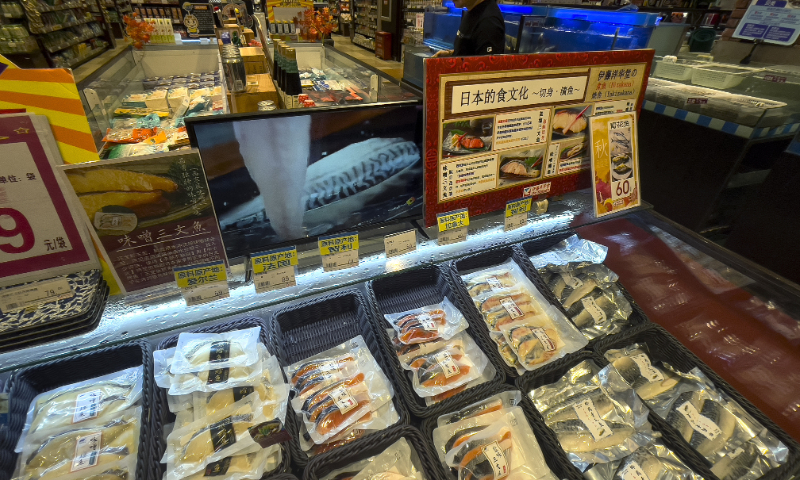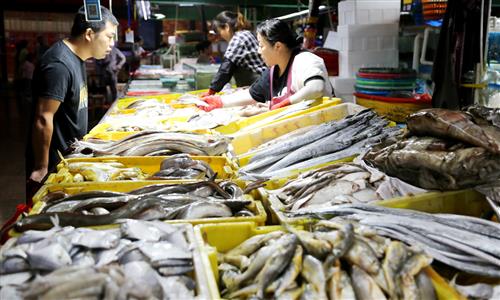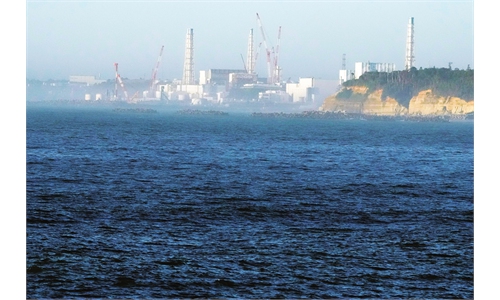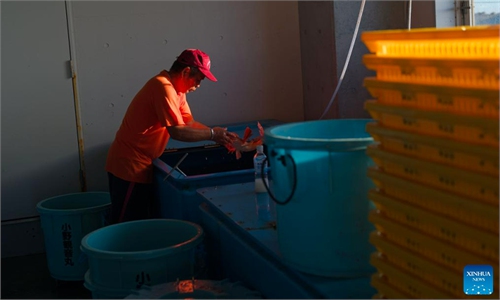Europe, Latin America actively tap into Chinese seafood market as Japanese exports fall to zero

Imported seafood from Chile, France and Canada at a Japanese supermarket in Beijing, on August 24, 2023 Photo: VCG
Countries in Europe and Latin America, including Norway and Chile, are actively tapping into the massive Chinese seafood market, as Japanese seafood exports to China in September fell to zero amid continued fears of contamination.
China has surpassed Japan and South Korea to become the largest export market for Norwegian fresh salmon in Asia for the first time, the Global Times learned from the Norwegian Seafood Council on Sunday.
In the first three quarters, Norway's exports of salmon to China reached 31,400 tons, up 63.4 percent year-on-year. The export value surged by 88.7 percent to 4.19 billion Norwegian kroner ($374 million).
Norway's total exports of seafood to China reached 109,000 tons, with a total value of 6.44 billion Norwegian kroner, representing an increase of 8.9 percent compared with the same period last year.
This makes China the largest market for Norwegian seafood in Asia and fourth in terms of export volume among more than 150 global markets for Norwegian seafood products, according to the Norwegian Seafood Council.
This year, the Norwegian Seafood Council is leading a team of 12 Norwegian seafood companies to attend the 6th China International Import Expo to further explore the Chinese market.
Chile is also increasing its efforts to export to China. A total of 13 Chilean seafood companies recently showcased salmon, king crab, snow crab, mackerel, squid and tuna at the 26th China Fisheries & Seafood Expo held in Qingdao, East China's Shandong Province.
China is one of Chile's most important export markets. Exports of seafood and fish to China in the first half of the year totaled $381 million, up 42.4 percent year-on-year, according to data from Chilean export promotion agency ProChile.
Chile is highly optimistic about prospects for the Chinese market and will be looking to bring Chile's high-quality products to still greater numbers of Chinese consumers, according to ProChile.
The strong and steady growth in exports comes as Japanese seafood exports to China fell to zero in September amid continued fears of contamination.
Data from the General Administration of Customs (GAC) showed that there were no records of fish or other aquatic invertebrates imported from Japan in September, whereas the figure stood at 149 million yuan ($20.36 million) in August. The figure stood at 2.085 billion yuan during the first eight months of 2023 and it remained unchanged from the first nine months, indicating that China did not import any aquatic products from Japan in September.
Amid ongoing concerns over Japan's nuclear-contaminated water dumping, many seafood traders have provided customs certificates to inform consumers that the products are not of Japanese origin.
"You can be assured in making a purchase as our salmon is sourced from Chile. The production date of the salmon raw materials is before August 24," a sales representative from a seafood retailer on Tmall told the Global Times on Sunday.
The GAC announced on August 24 that China would halt all aquatic product imports from Japan after the Japanese government, in disregard of strong criticism and opposition from the international community, unilaterally started the dumping of the Fukushima waste water into the ocean.
The move aims to prevent the risk of radioactive contamination caused by the dumping of nuclear-contaminated wastewater from Fukushima to affect food safety, protect the health of Chinese consumers and ensure the safety of imported food.



